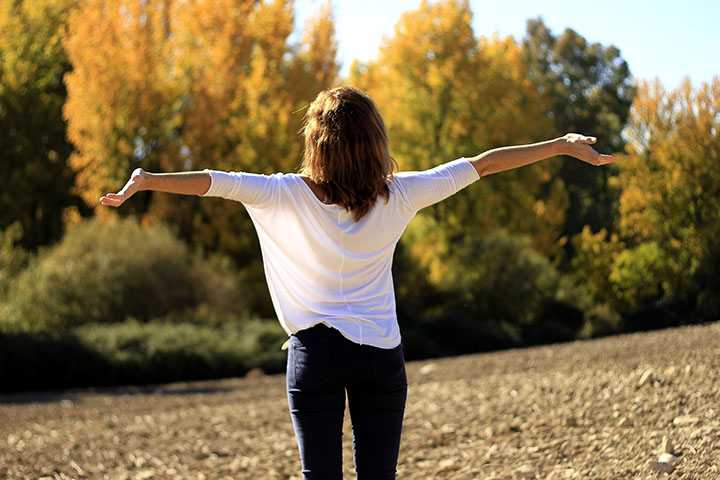Are you feeling anxious? Do you feel harassed by the voices in your head? Can you imagine what you would feel like if they were silenced? I don’t want you to feel like there is something wrong with you— we all experience this. Unfortunately, we are never taught as children how to deal with this.
What if I told you there is an
easy solution?
One of the quickest ways to calm and quiet the sub-vocalization of the mind is to learn to control your breathing. I know it sounds simple and truthfully it is. Imagine the peace a quiet mind would give you. Would you be more joyful? How would this effect the way you react to situations, to people, and the way you see the world?
Breath is vital. I am sure you know this. We can live without food for weeks even months. We can live without water for a few days. But, we can only survive a few minutes without breath. Breathing exercises strengthen the muscles needed to breathe. Most human beings breathe and only 1/8 of the capacity of their lungs.
They have no sense of the intercostal and diaphragmatic muscles needed to perform a single breath.
Why then are so many people reluctant to give this a try? Why do we make an attempt to teach little children about food and water, but we do not give them the tools to properly use their voices, to meditate and the easiest way to address these: breathing?
Can you imagine what the world would be like if you were taught this in kindergarten?
Perhaps it is because sitting still is a challenge and it seems like we are not doing very much when we practice various breathing techniques. When I used to teach group Yoga classes many centers did not allow enough time for a proper practice and only wanted me to focus on asana—the postures of Yoga. When I taught in gyms it was even worse. They did not even want me to properly warm up a class and seemed to think the striking poses were the most important part of the practice.
How sad. Focusing on breathing is the way to get the most out of any exercise. Learning how to develop your ability and increase your power to breathe is the best way to nourish your body and brain.
The exercises of pranayama not only help strengthen the body and get the practitioner in touch with the structural aspects of breathing but even more important is to learn about and gain control over the cessation of breath. I know you must think this doesn’t make any sense as I just said earlier we can only survive a few minutes without breathing. Stay with me for a moment.
Breathing could be the key you are missing to unlock the door to
inner-peace
The practice of learning to pause the breath in Yoga is called Kumbhaka. This is the retention of the breath after an inhalation or the pausing following an exhalation. Being in the state of suspension is called Kevala Kumbhaka.
The complete suspension of the breath is practiced in a comfortable manner for as long as the practitioner desires. It should never be forced. The magic of this moment of suspension quiets the mind, soothes the physiology, as well as invigorating the cellular structure of the body.
When I think about the effectiveness of the cessation of breath I imagine a little kid who is very frustrated. They will often instinctively hold their breath when anger or frustration flairs.
Did you ever wonder why? It is a mechanism that shuts off the mind chatter.
Your next three breaths hold
the answer
Here is a short practice you can try along with me. In less than five minutes I guide you to find the state of meditation. Take five minutes and try it out with me. When you are in the third breath of the series, it is then your choice to simply observe it; or stay in it for as long as you like.
What I want you to try to notice as you practice along with me in this little exercise, is how you feel before you begin, what you notice during the practice, and how you feel after. Also notice that after just a few short minutes of focusing on your breath that you feel like you are more comfortable in your body, more at peace in your heart, and have the feeling that you could stay there seated in quiet contemplation for a longer period of time. Most importantly I want you to notice how quiet the mind is. This seemingly simple practice is a great way to launch yourself into the state of meditation. I look forward to you trying it.
More ways to help you find the state of meditation a lot easier and quicker are: A healthier diet, gaining deeper sleep, and the lifestyle choices you make. The two factors I see that most people suffer from regarding difficulty sleeping are poor breathing and poor digestion. The inability to breathe deeply also challenges our emotional and physical well-being. I give a lot of information and guidance about this in my self-guided course: End Sleep Envy.
Without the practice of Pranayama, it is likely you are going to find yourself wresting with the mind’s sub-vocalization and struggling to find the inner peace and quiet you crave. Please be aware that it is very important to learn these techniques from a reliable, well-trained instructor. Beyond learning proper breathing techniques, I also find that my clients and students benefit greatly from learning to annihilate incessant thought loops. I wrote about this in last month’s issue and you can read my article here. This process be taught in a group or one on one session with me.
Ambika Devi
Ambika Devi is an international award winning best-selling author, expert astrologer, meditation Jedi, speaker and storyteller on a peace mission to help you step out of the churning river of thoughts and activity of the mind, stop wearing insane schedules like badges of honor, and begin your days reinforced with the calmness a meditation practice brings. Visit her at:
AmbikasCoaching.com




